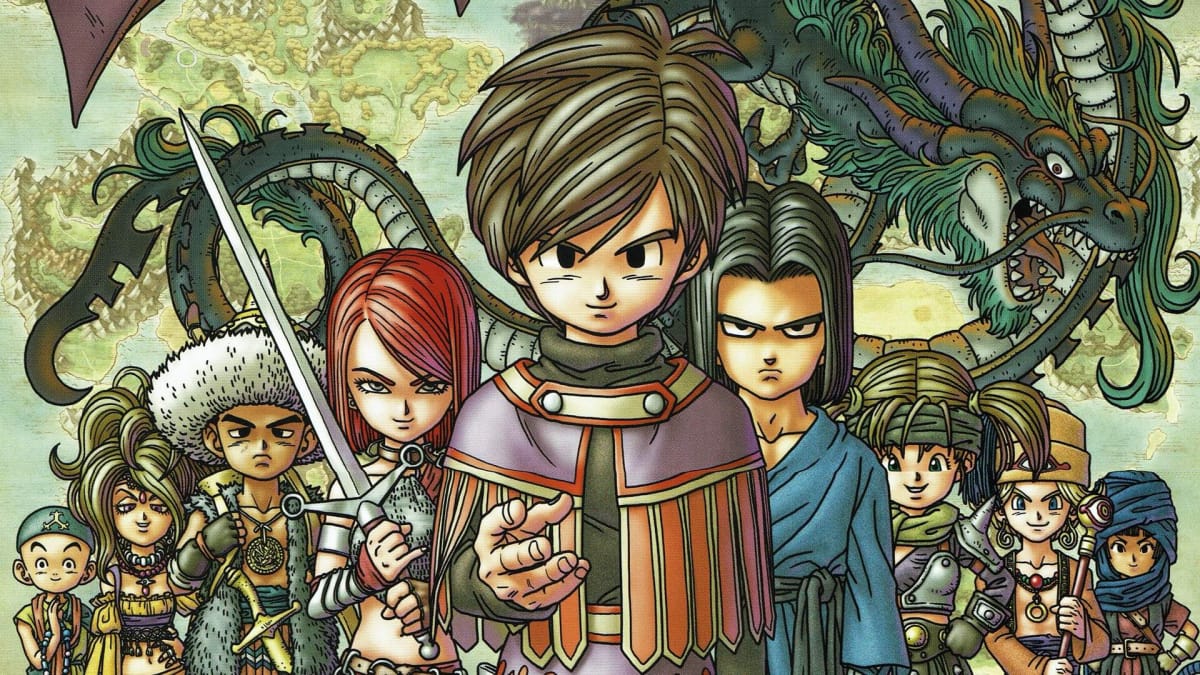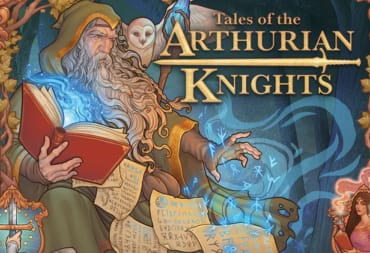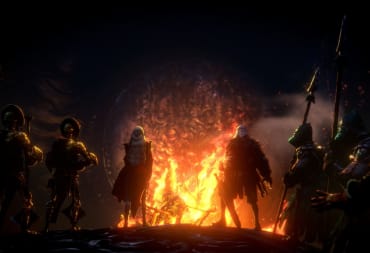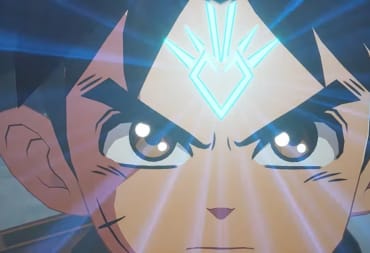Among the Marios and Zeldas celebrating their franchise's 35th anniversary lies the equally time-honored, yet not as celebrated in the West, Dragon Quest. Fabled for its fantasy setting, slimes, and traditional turn-based combat, Dragon Quest has been a source of inspiration for many video-game franchises, namely Pokemon, Mother, and Final Fantasy to list a few.
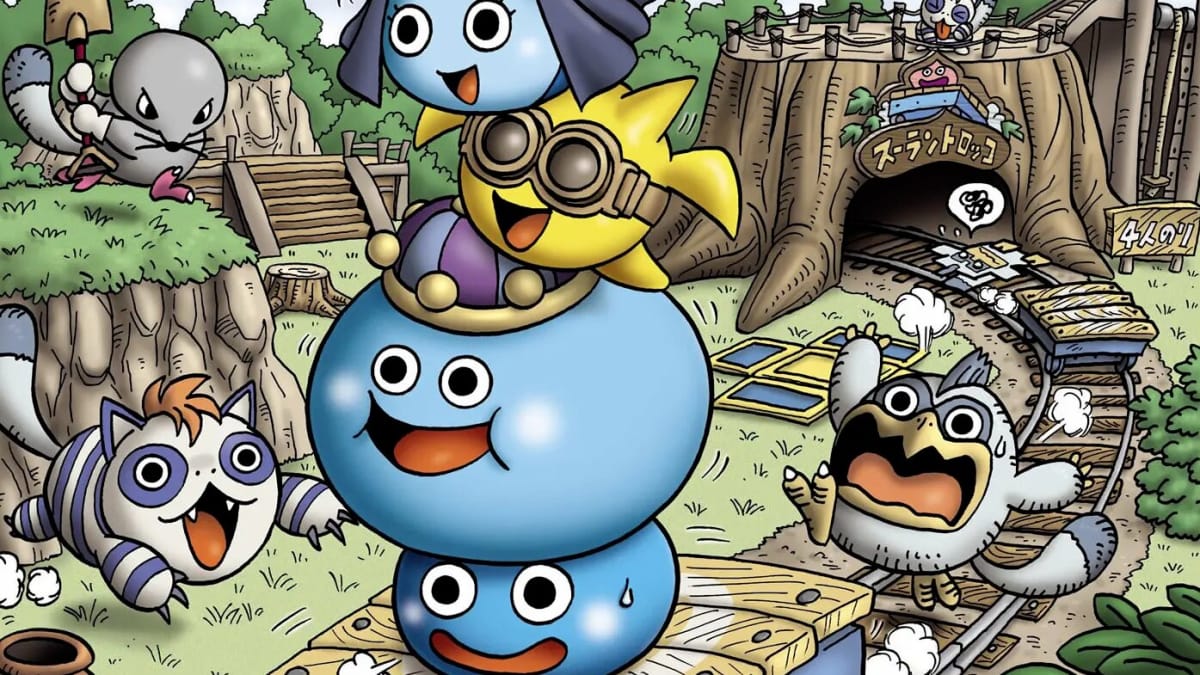
35 years later, Dragon Quest is still a mainstream juggernaut in Japan and has had a slow uphill battle in gaining a modest fan following elsewhere. Arguably, the franchise caused quite the revolution in the history of gaming, and Dragon Quest’s history is quite the journey.
In the Beginning, There Was Enix
Before the powerhouse, we know as Square Enix was formed, they were simply known as Square and Enix. Enix began in 1975, under the name Eidansha Boshu Service. Founded by Yasuhiro Fukushima, it started out as a publishing company focusing on real estate. In 1982, after their new subsidiary, Enix was established. The subsidiary failed to capture the real estate and brokerage market as planned. Naturally, Fukushima decided to jump ship and go into the industry of PC games, after witnessing their popularity overseas.
However, Fukushima wasn’t a man well-versed with computers. But of course, what better way to look for people to hire than hold a PC game programming contest? There were over 300 applicants, and among them were Yuji Horii and Koichi Nakamura. At the time, Yuji Horii was a journalist for Weekly Shonen Jump aspiring to be a mangaka, and wrote columns about video games. Koichi Nakamura was a professional video-game developer, who already had a few credentials under his belt.
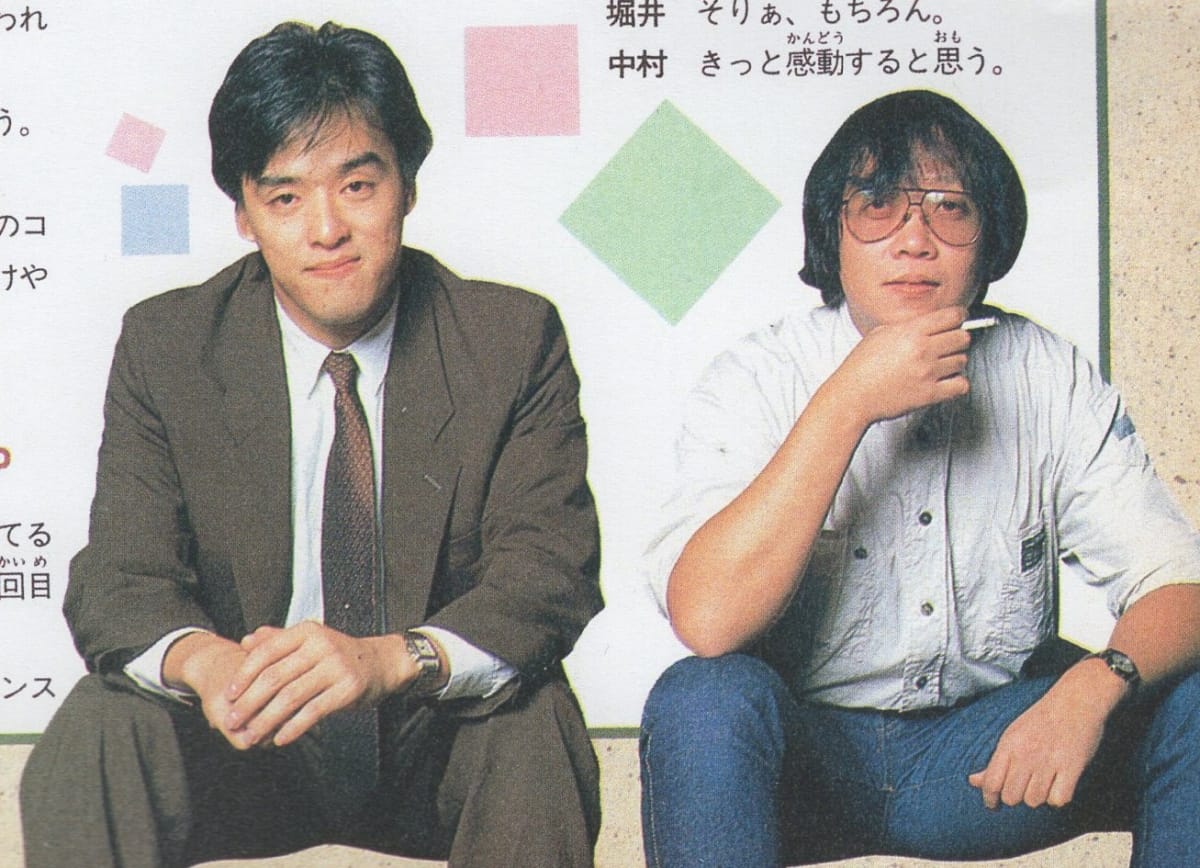
With these two in tow, Fukushima had plans of creating a new best-seller after the success of Nakamura’s Door Door. Additionally, Horii’s colleague at Shonen Jump, Akira Toriyama, now world-famous as the creator of Dragon Ball, was invited to work as a character designer. As if the stars aligned in their favor, Enix had received a fan letter from a very esteemed composer, Koichi Sugiyama, who praised their PC shogi game. Honored by his words and impressed at his knowledge about games, Enix invited Sugiyama to compose for them.
With the main party now assembled, things started going into action. For the actual gameplay bit, Horii and Nakamura took inspiration from Ultima and Wizardry, RPGs on the PC. But there wasn’t anything quite like that for the Famicom/Nintendo Entertainment System, which was more popular than ever at the time. He wanted to bring the RPG experience to Famicom. In an interview with IGN, discussing the development of Dragon Quest, Horii said, “We really focused on ensuring people would be able to experience the fun of the story.”
A Hero is Born
In 1986, the first Dragon Quest was released in Japan for Famicom. On release, the game’s sales weren’t doing too great, but a combination of Horii’s articles in Shonen Jump and Toriyama and Sugiyama’s star power really propelled the game to fame. One million copies ended up being sold in the first six months, with people praising the game’s rich soundtrack, story, and character design.
The formula of turn-based combat, high-fantasy setting, and a playable hero who sets out to save the world has been a constant throughout the franchise, and so has its core development team. It inspired many Dragon Quest “clones” later on, including its biggest rival at the time, Square’s Final Fantasy. Many, however, cite it as the first RPG for the console, and its impact on video games is considered unparalleled.
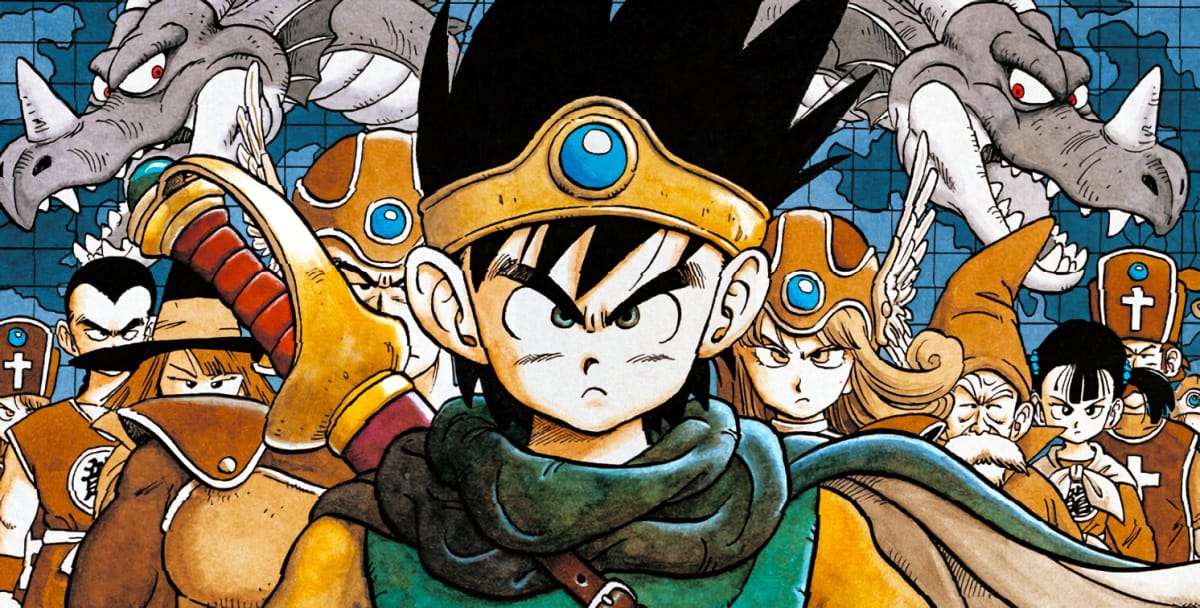
Following the first game’s massive success, Dragon Quest II and Dragon Quest III were released in 1987 and 1988, thus forming the Erdrick Trilogy (or the Loto Trilogy in Japan), as they all belong to the same storyline. At this point, there were three Dragon Quest games out in Japan, and the rest of the world hadn’t gotten a taste yet.
Uncharted Seas
The English version of Dragon Quest was released under the name Dragon Warrior (due to trademark reasons) in 1989 in North America. Its reception was lukewarm, to say the least. It definitely garnered its own niche following, but commercially it wasn’t a success.
The game was released in the West a good three years after its Japan release, rather late for any game getting localized. So, graphics- and interface-wise, it wasn’t the most impressive among the lineup of games that players had at the time. Not to mention, Dragon Quest's combat was a bit relentless and unforgiving. Leveling up meant walking around and defeating a fair number of monsters to earn coins and experience. You could only level up once you had enough money on you, and if you died, you’d lose half of your hard-earned gold and be set back by a good few hours.
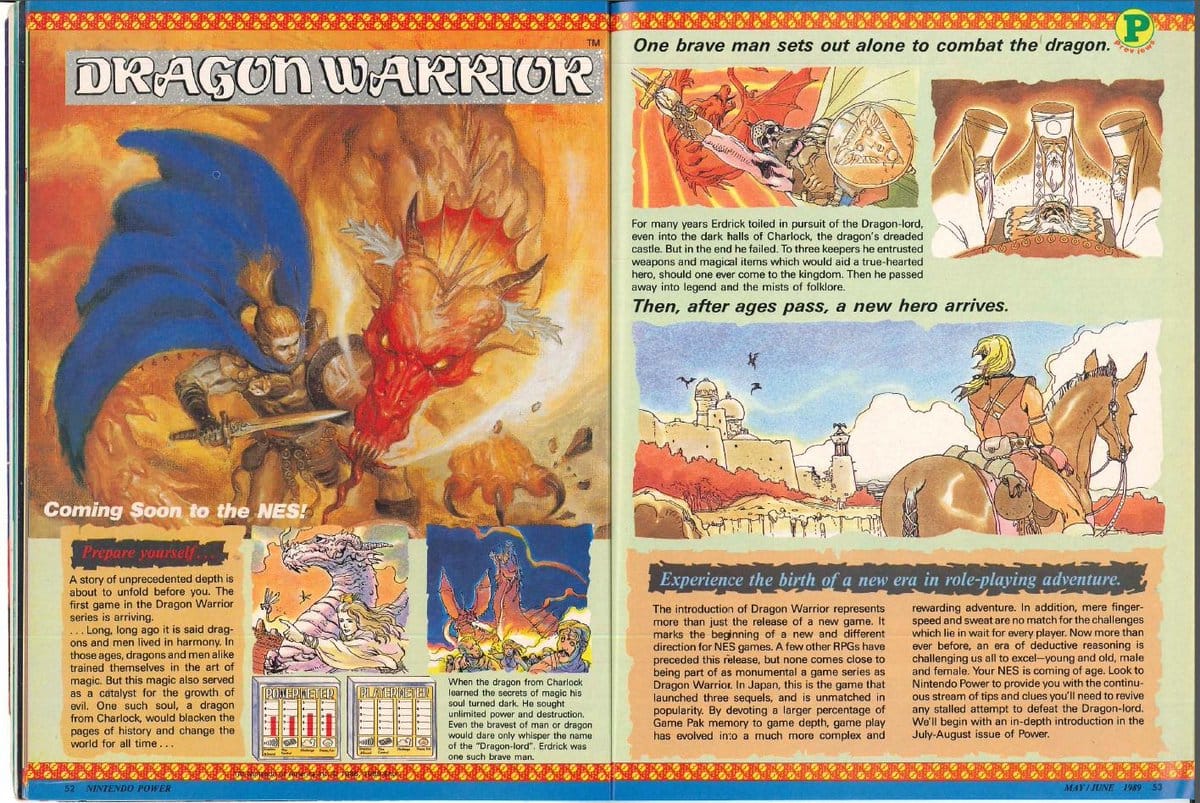
Horii put it best in an interview with Gamasutra. When talking about how the gameplay was traditional to the Japanese, he said, “It's like climbing up a steep mountain—you have to keep climbing, climbing, climbing, climbing, and then at the end, you finally get to the top of the mountain, and you see the beautiful view.”
People weren’t much for climbing it seemed, and Nintendo had to get crafty with the extra copies they had. They started giving away copies of the game to people with a Nintendo Power subscription. Perhaps the sequels would catch on with the players in this way, but by the time Dragon Quest III came around and brought the class system and more interesting combat to the table, Final Fantasy was already taking the West by storm, especially with its better visuals.
A Tough Battle
Of course, this didn’t deter the development of Dragon Quest IV, the last Dragon Quest on the NES. Now done with the Erdrick Trilogy, there was a bit more creative freedom. The game followed a chapter-based story system, featured 16 different named characters—the largest cast for its time—and even day-and-night cycles in the towns. Dragon Quest IV even introduced what would become a staple of the mainline series from there on out: mini medals, little medals spread throughout the map that could be traded for some pretty cool gear.
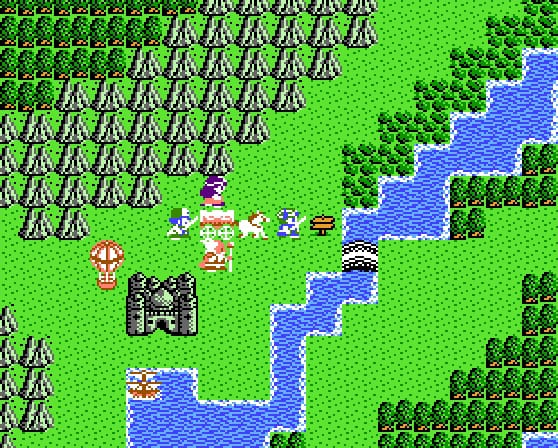
It also became the first of the franchise to spawn a spin-off. Based on the merchant Torneko from the game, Torneko no Daibouken: Fushigi no Dungeon, was the first of the Mystery Dungeon games from Spike Chunsoft, which later on spawned the Pokemon Mystery Dungeon series.
Dragon Quest IV marked the start of the Zenithian Trilogy, and unlike the Erdrick Trilogy, the story of each game wasn’t interconnected. Rather, the Zenithian Trilogy is connected through the presence of a Zenithian Sky Castle in each game.
The era of the NES was no more, and in came the dawn of the Super Nintendo Entertainment System. The console’s extra bells and whistles meant better graphics and more oomph to the sound system. Dragon Quest V was released during Super Famicom in 1992 in Japan. For reasons still unknown today, it was never released on the SNES, and only got a release in the West after the remake on the Nintendo DS. However, Dragon Quest V later became a success amongst critics for its captivating storytelling. It also became the first Dragon Quest game to feature post-game content.
Dragon Quest VI for the SNES took place between dreams and reality and offered the most advanced take on the class system so far with the class hierarchy, a first for any RPG. The game went on to sell 3.2 million copies in Japan, becoming the best-selling game of 1995. However, like its predecessor, Dragon Quest VI didn’t get localized for the SNES either, and in similar fashion was remade for the Nintendo DS and saw a Western release.
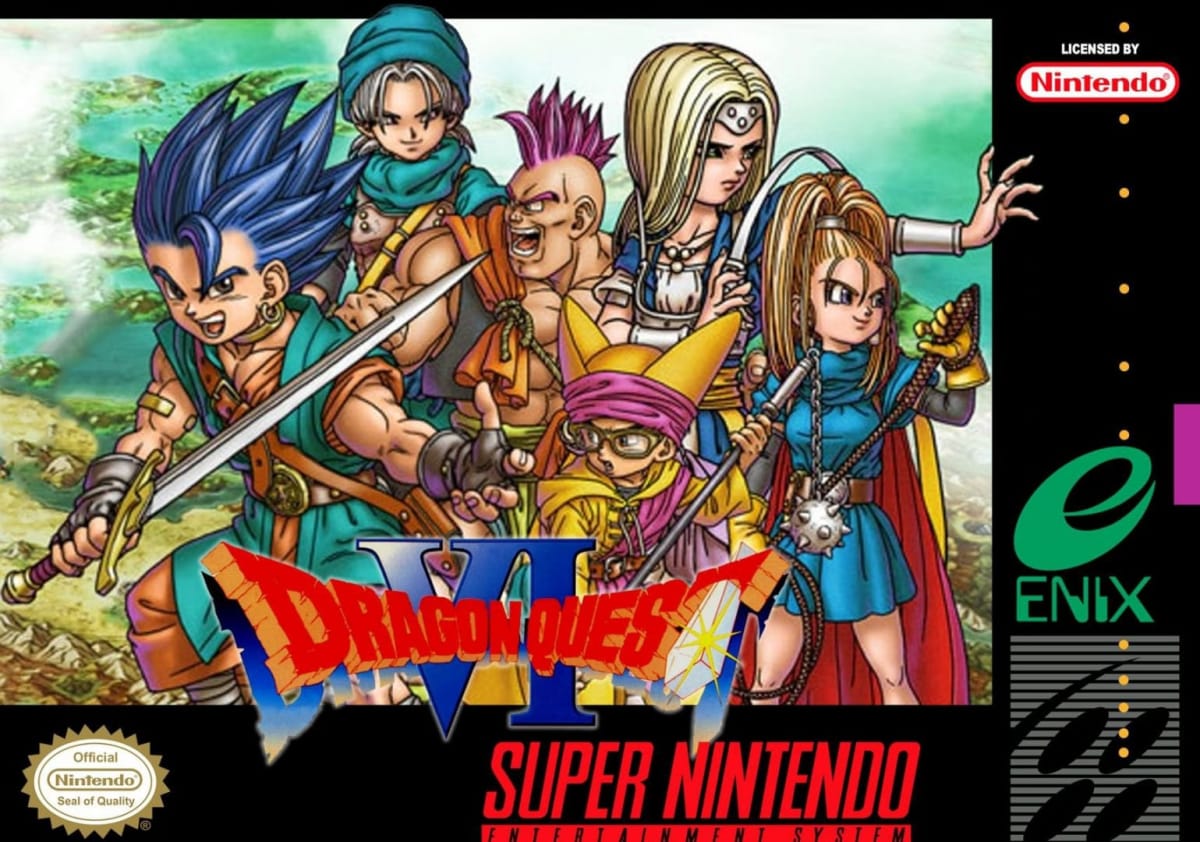
It seemed like Enix had given up on the North American market altogether at the time, and for good reason. It had been years since a Dragon Warrior game saw a Western release. Enix gave it another shot with Dragon Quest VII for the PlayStation, and it was a behemoth of a game with an average playthrough taking up over 100 hours, but the sales figures weren’t ideal.
It was released in 2000 in Japan, and once again, became a best-seller that year with over four million units sold, but the North American release in 2001 was less than stellar, with less than a measly 200,000 copies sold. IGN’s review stated, “The fact that all 100+ hours of Dragon Warrior VII are so entertaining is a testament to the quality of the game that lies beneath the dated visuals and clunky presentation.”
An Unexpected Ally
In 2003, long-time rivals Square and Enix decided to put aside their differences and rejoice in the name of RPGs. Thus, formed Square Enix, and Final Fantasy and Dragon Quest, once sworn mortal enemies, were now brothers in arms.
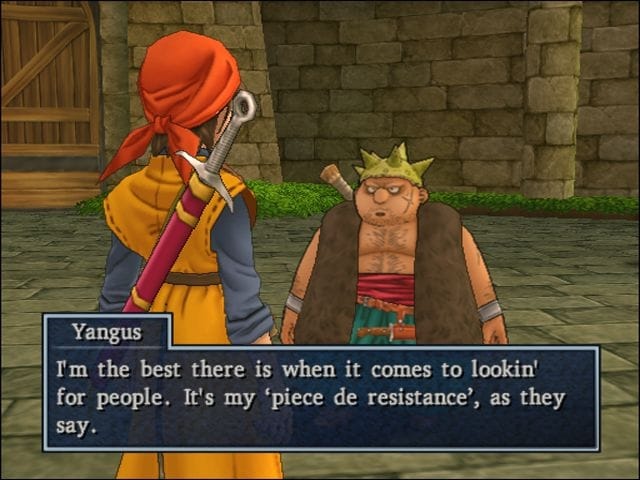
Dragon Quest VIII would be marked as the first Dragon Quest game made under the new merger, and with it came a few changes. The first noticeable one was that there were no more pixel art sprites and that both character models and environments were entirely in 3D. The second was the addition of voice acting, and later on, the English localization had its own voiceover as well.
Things would proceed as they would in Japan, and the game ended up being a best-seller not just that year, but of all time for the PlayStation 2. In North America however, things were a little different this time around. For one, the rights to the Dragon Quest trademark had finally been acquired, and gone was the prospect of Dragon Warrior VIII.
A new team was behind the translation of Dragon Quest VIII, as the team behind Final Fantasy VIII’s localization would be working on the script. The team tackled all the nuances the original Japanese had to offer such as the dialects and puns, and got rid of the archaic English the former translations made use of. The quality of the localization was what set the benchmark for future Dragon Quest games and set a more approachable tone for players.
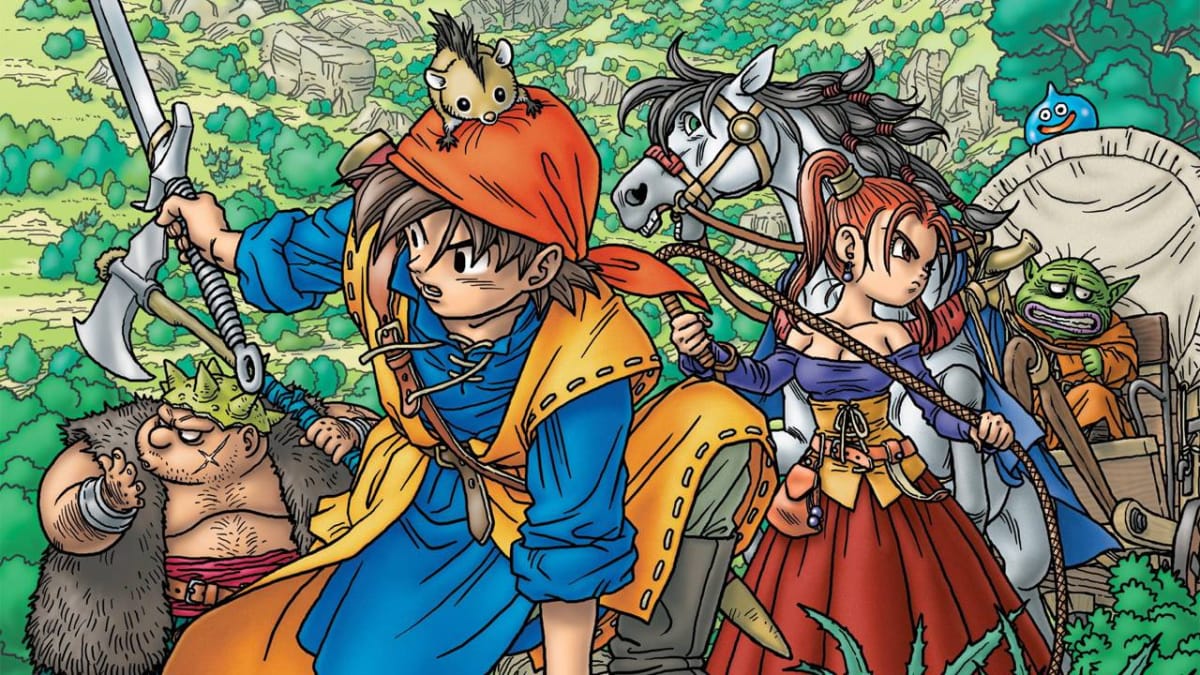
Moreover, for promoting the game, a number of malls offered playable demos this time around, and the game itself shipped with a free demo disc for Final Fantasy XII. The game sold over a modest number of 430,000 copies in North America, more than twice the amount that Dragon Warrior VII sold. It became a hit amongst critics too, with people singing praises about the localization and cel-shaded visuals.
Onwards and Upwards
Things were looking up for Dragon Quest outside of Japan, and Square Enix seemed to agree too. The Nintendo DS was at its peak around that time, with its revamped version becoming the hottest thing since sliced bread. It was logical for the company to ditch the home console and take a chance with the handheld. At the franchise’s 20th-anniversary press conference, Dragon Quest IX was announced to be in development for the Nintendo DS.
This time around, Horii was looking to woo the Western audience, and so development was in full swing. At times there would be moments where it seemed like there were too many changes being made, and things would take a step back to make sure the game didn’t stray from its Dragon Quest roots. After all, it was important to retain their current Japanese audience.
For the first time, there was a character customization screen for the protagonist, whereas at the most, players were allowed to choose which gender the hero would be in select games. Additionally, the animations were flashier and featured a lot more polish to appeal to Westerners. At the same time, developers made note of the success of multiplayer games such as Monster Hunter and made good use of the DS’s wireless capabilities.
Dragon Quest IX featured an ability known as “Tag Mode,” which allowed players to passively exchange treasure maps while the DS was in sleep mode, regardless of the cartridge in the system. It was this feature that inspired the creation of the StreetPass function on the Nintendo 3DS, as later on, Tag Mode proved to be quite the hit in Japan, with the number of passing-by connections between DSs increasing.
It took a good few years to perfect the game, with a number of delays along the way, but it ended up being well worth it. Dragon Quest IX was released in Japan in 2009, and as per the usual business, became a best-seller on the DS.
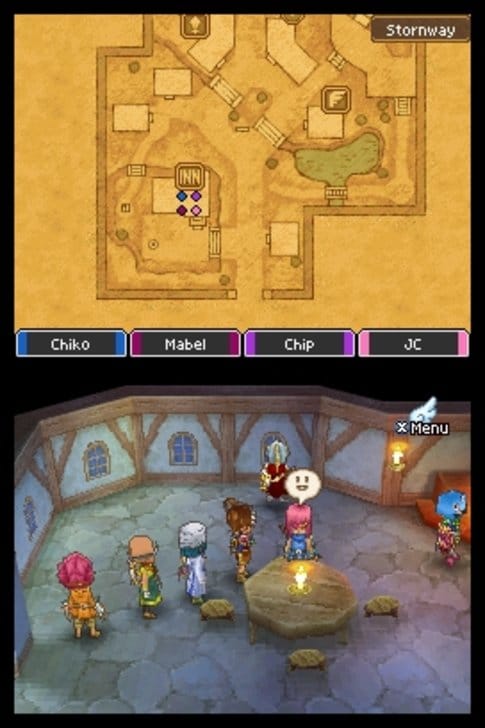
Of course, the more pressing matter was its reception in the West, and once again, Square Enix was pulling out all the stops on marketing the game, with Yuji Horii himself visiting the Nintendo World Store for the game’s launch event. Even Nintendo of Europe held their own events and set up a little medieval village at Convent Garden where players could get their hands on the demo and even some slime plushies.
Their efforts definitely paid off, as Dragon Quest IX went on to break through one million copies sold in the United States and Europe, and debuted at the top-selling charts. Critically, it was a success as well, with Gamasutra even naming it as their number one handheld game for 2010.
The Journey Continues
Following the success of Dragon Quest IX’s multiplayer mode came an MMORPG in the form of Dragon Quest X in 2012. Development for the game was simultaneous with Dragon Quest IX’s. To assist their endeavors in making an MMORPG was Naoki Yoshida, director for Final Fantasy XIV and executive producer on the Drakengard series. Dragon Quest X went on to release on the Wii, Wii U, PlayStation 4, Nintendo 3DS, iOS, and Android and was an instant hit.
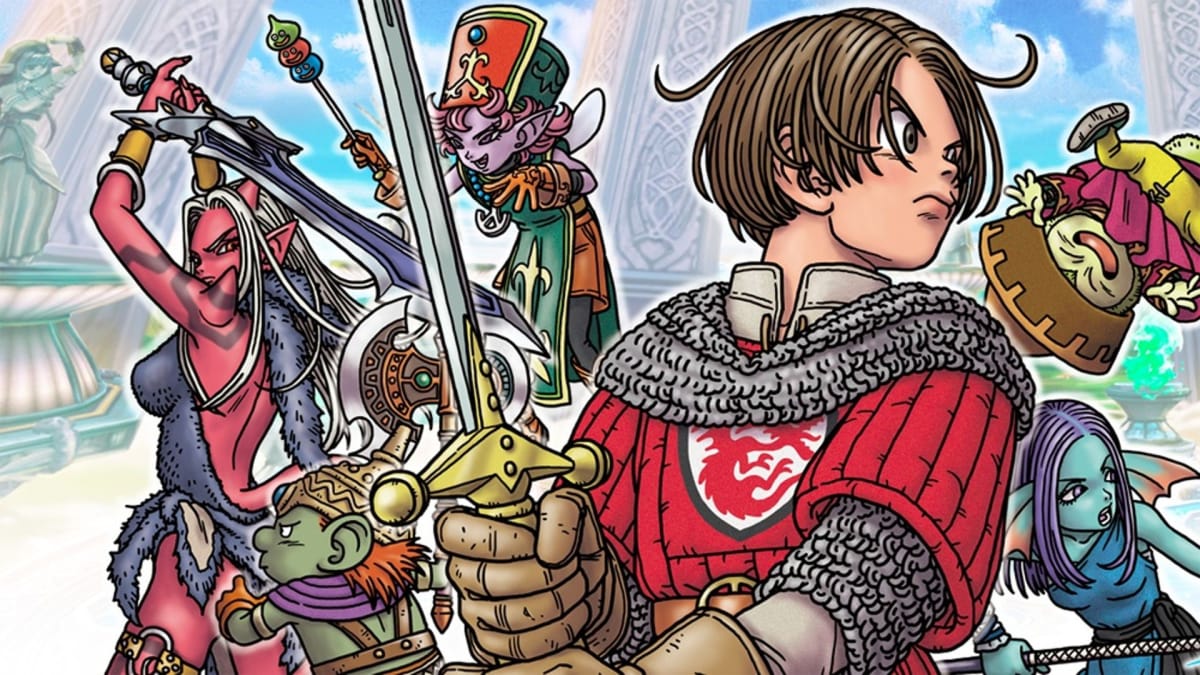
While the game is still fully supported even today and has received a Switch release as well, it’s the only mainline Dragon Quest game to not receive a Western release in any form. When asked about localization, the game’s staff outlined that the amount of text would be a hassle, and dealing with servers in multiple regions would crop up a number of issues.
That’s not to say that Square Enix slowed down the release of other Dragon Quest-related content in the West. The remainder of the Zenithian trilogy was re-released on the Nintendo DS with upgraded graphics. There were even a few spin-off titles in the mix such as Dragon Quest Swords and Dragon Quest Heroes.
Dragon Quest VII and Dragon Quest VIII were released on the Nintendo 3DS, and monumental efforts were made to improve the localization. In fact, for Dragon Quest VII, the team started from scratch, from glossary creation to bringing out a variety of accents. The original Japanese scripts from Square Enix’s offices were dubbed as the ‘Binders of Doom,’ rightfully so from their gargantuan presence.
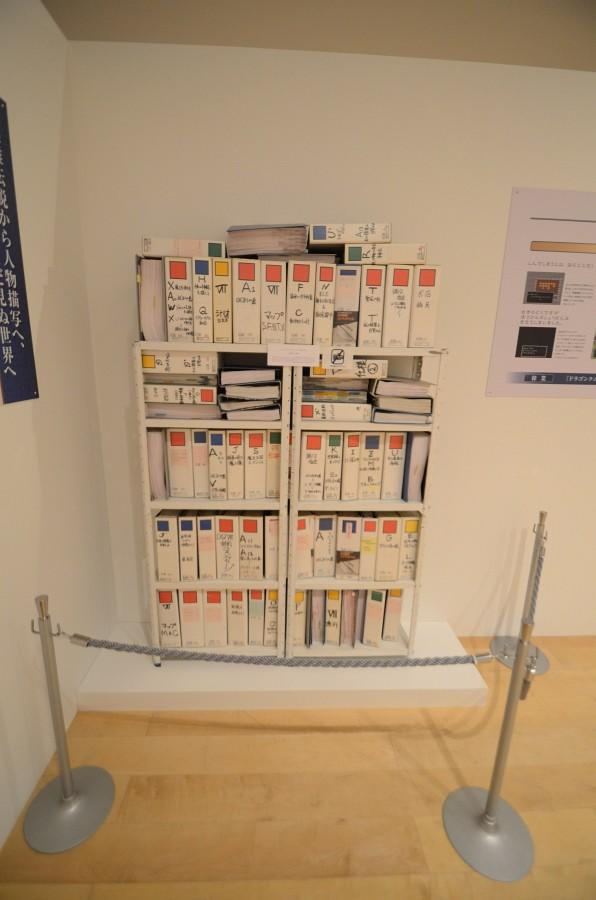
The most recent mainline game, Dragon Quest XI, is essentially the essence of what Dragon Quest is, and while the base game is pretty solid, the definitive edition Dragon Quest XI S, is a love letter to the franchise. It features the same time-tested combat and solid story that’s been there since the series’ inception but also features the delightful translation and class system of the new. Depending on who you ask too, getting rid of random encounters is a sigh of relief.
For long-time fans of the franchise, there’s the option to play entirely in 2D mode, with random encounters and text-heavy menus. There’s even an entire set of side quests through which you can revisit fragments from the older games.
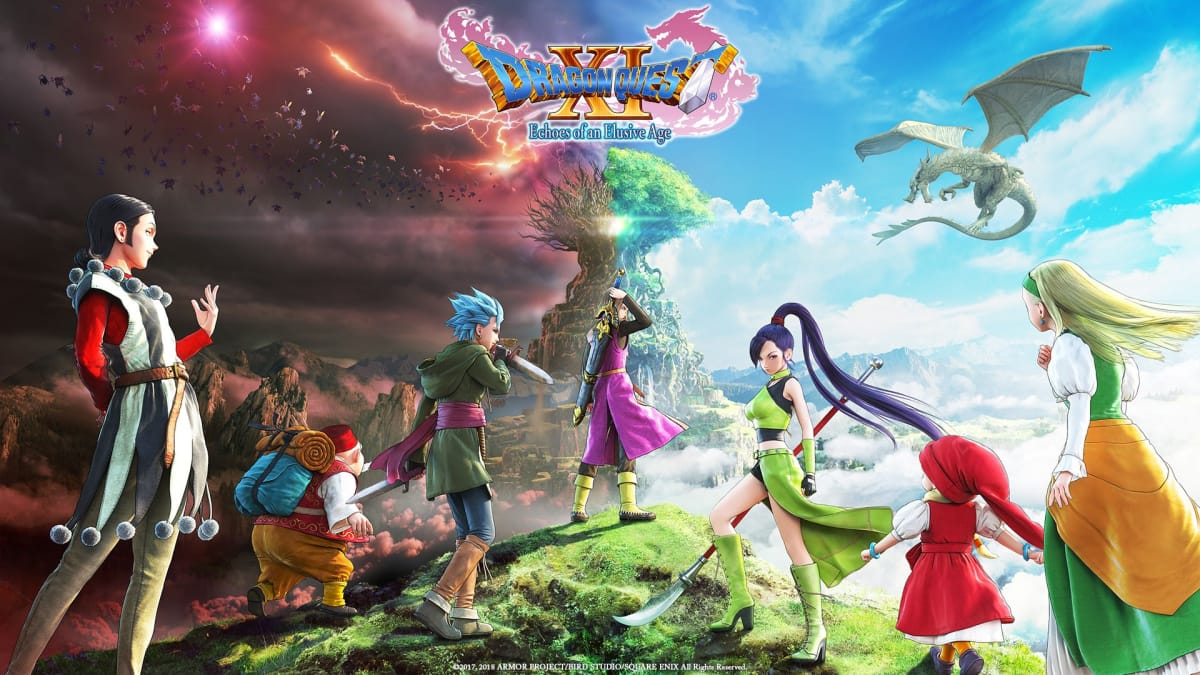
The announcement of Hero in Super Smash Bros. Ultimate was one that was long overdue considering the impact the franchise has had. Consequently, the Dragon Quest XI S’s Switch release piqued a lot of people’s interest. The definitive edition was re-released on Steam, PS4, and Xbox not too long ago.
Venturing Forward
Retrospectively, Dragon Quest has never been a series for much change, and that’s not a bad thing. For many fans, it’s a source of comfort to go back to a familiar setting and hear the signature series’ fanfare on the title screen, with the same Slime to defeat on your first battle. In the words of Yuji Horii himself, “Games are magic,” and it’s that sense of magic that Dragon Quest has retained throughout.
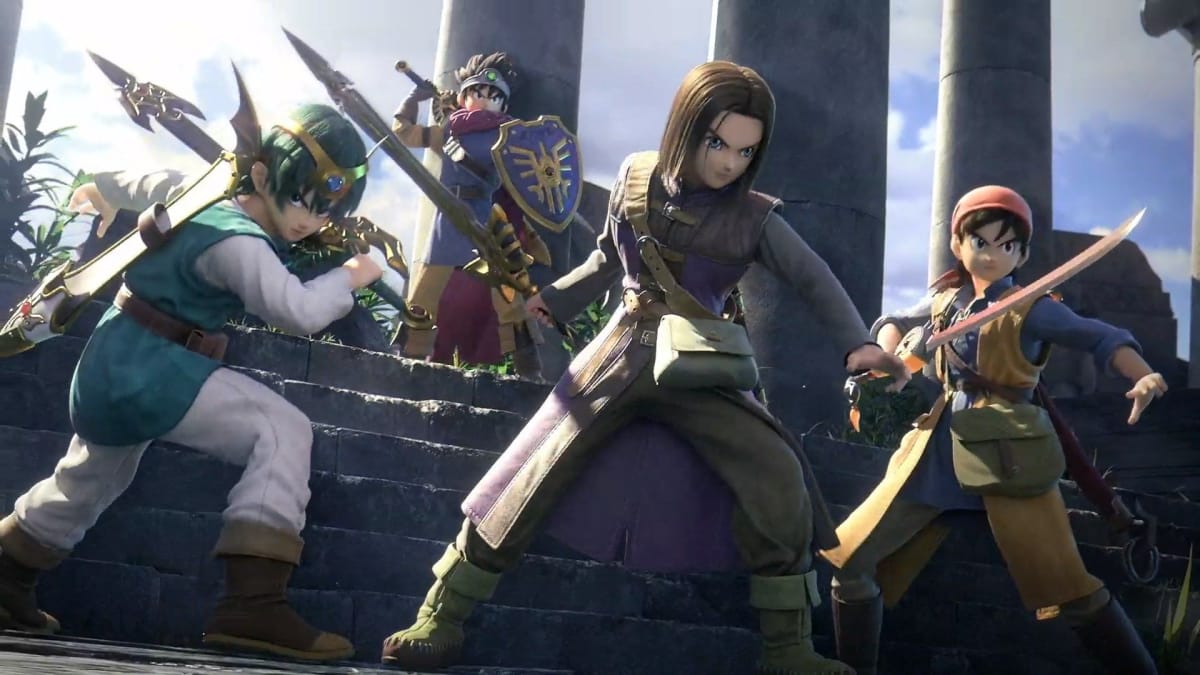
That being said, there are a lot more people looking forward to a new mainline Dragon Quest game, now more than ever. Whether it will be the classic Dragon Quest experience filled with beloved characters, turn-based combat, and goofy gags, or even an entirely new journey set in an open world to hunt down metal slimes, I for one, will look forward to the adventure.
Have a tip, or want to point out something we missed? Leave a Comment or e-mail us at tips@techraptor.net
